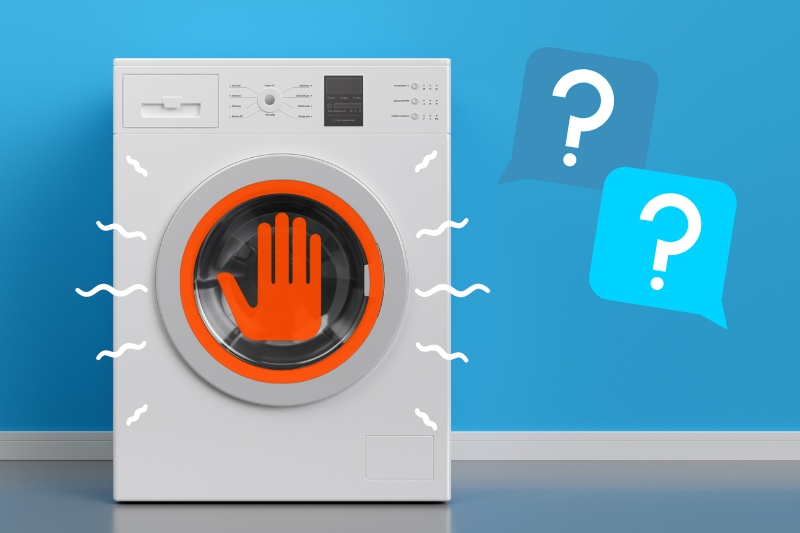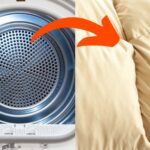Does your washing machine shake and bump around while doing your laundry? If it does, then you’re not alone.
Whether it vibrates consistently when in use or just during a particular part of the cycle, this is a common issue that people have to deal with.
Not only are the vibrations loud and annoying for you and your neighbours, but they can also actually cause damage to your machine!
Thankfully, though, there is something you can do about it. Read on to find out how to stop a washing machine from vibrating and learn why it happens in the first place.
How to Stop Your Washing Machine from Vibrating
No matter how good your washing machine is, there is bound to be some vibration when it is in use.
However, a machine that vigorously shakes and bumps around during a cycle is not normal and needs to be sorted out.
There are multiple things that could be causing your washing machine to vibrate, each of which can be rectified if you know how.
Below are seven things you can do to fix the issue, as well as what could be causing the vibration problem in the first place.
1. Level the feet
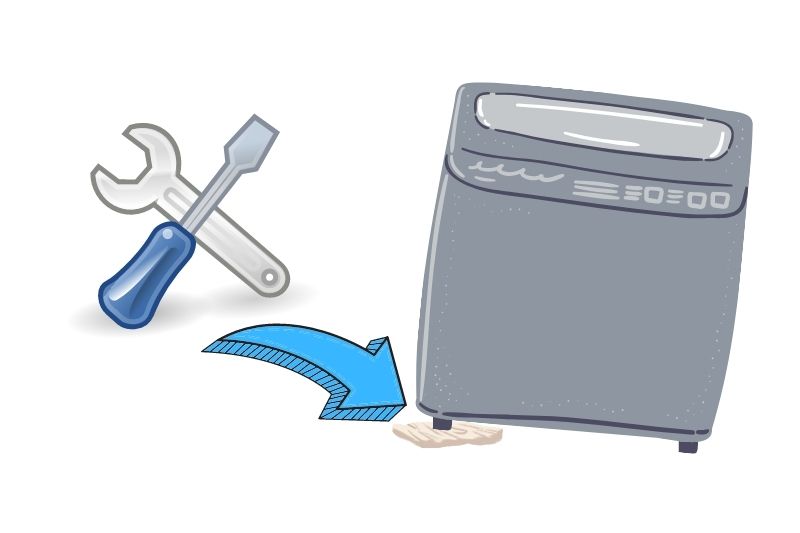
The first thing you need to do if your washing machine is violently vibrating during every wash is to check that it is level, as this is the most common cause of vibrations.
Your washer may look level to the blind eye, but even the slightest imbalance could be causing the issue.
The easiest way to check if your washing machine is level is by using a levelling tool. First, check the floor where the machine is placed. If the floor isn’t level, you will need to adjust the feet of the washer until the slope has been compensated for.
Continue adjusting the feet and checking the level of the washing machine until the appliance is stable.
2. Balance the load
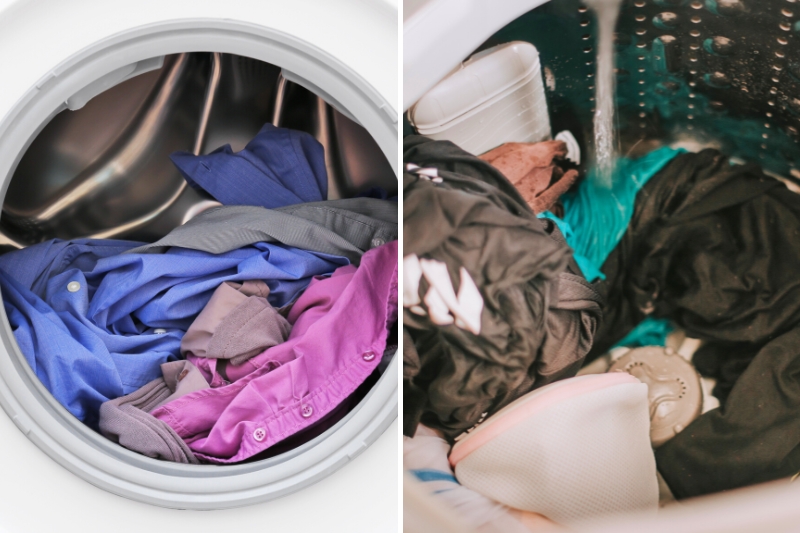
If your washing machine is level and you are still having vibration issues, make sure you balance your laundry when putting it in the machine.
When a load of laundry is unbalanced, the machine’s drum will wobble while spinning, causing the whole machine to vibrate. You also need to avoid overloading your washing machine for the same reason.
In top-loading washing machines, try to ensure that heavy items (e.g., towels and bedding) are evenly spread around the centre column rather than placed on one side of the machine.
For front loaders, the positioning of your laundry is less important, but you still need to bulk up your load if you’re washing a single heavy item. For example, add an extra towel even if you only need to clean one.
3. Add a floor support
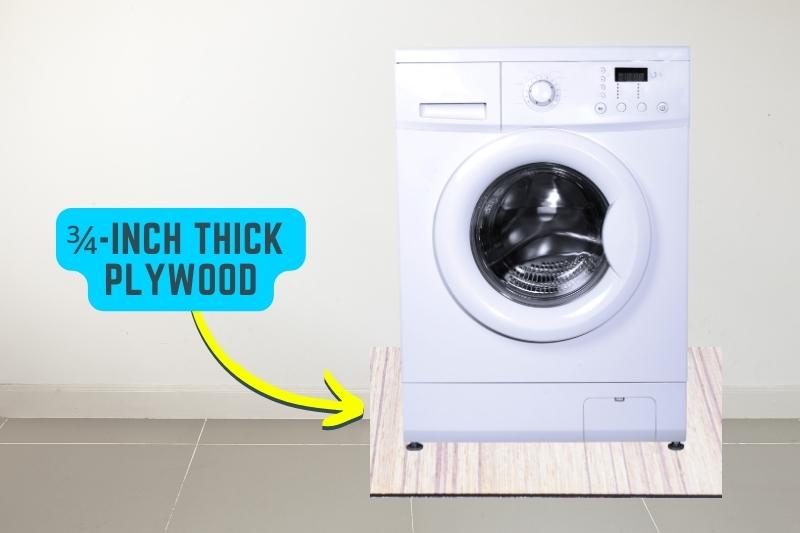
If the floor your washing machine sits on appears to be shaking with the machine, it may be that it isn’t sturdy enough to hold the weight of your washer. In this case, you will need to add some form of floor support to stop the excessive vibrations.
Depending on where your washing machine is located, you may be able to increase the sturdiness of the floor itself.
However, in most cases, the best solution would be to sit the washer on a ¾-inch thick piece of plywood. This will help to spread out the weight of your washing machine and provide your flooring with extra support.
4. Check the stacking kit
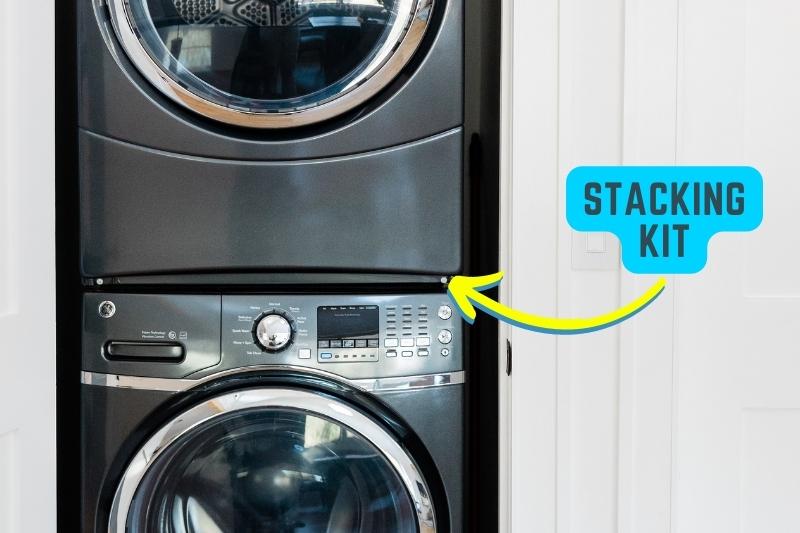
Another thing that you need to check when your washing machine shakes a lot is the stacking kit. This is only applicable when your washer and dryer are stacked on top of one another, so if this doesn’t apply to you, feel free to skip to number five on this list.
A stacking kit is what keeps the stacked unit stable while the appliances are in use. If the kit is not installed properly or is missing altogether, your washer will become off balance during use, causing it to move around. Make sure the kit is in working order and buy a new one to install if necessary.
5. Remove the transit bolts
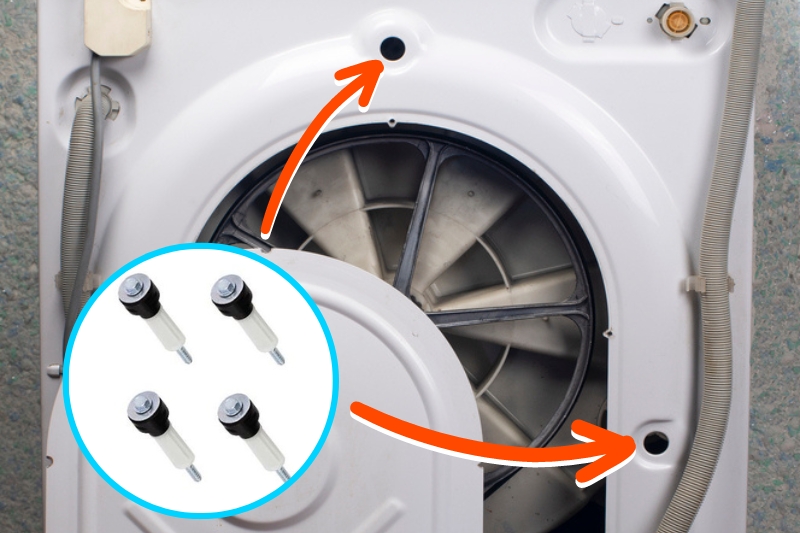
Next up, we have transit bolts. When you buy a washing machine, it comes with transit bolts in the back that help to keep the drum in place and protect the machine from damage during transit.
These bolts need to be removed once the machine has been installed, otherwise they will cause damage to your machine when it is in use. For example, the outer casing may tear.
If you have left the transit bolts in place, this will be the cause of the vibrations, as they will make your whole machine shake rather than just the drum.
Check to see if the bolts are still in place by looking at the back of your washer or by pressing on the inside of the drum. If the bolts have been taken out, the drum will wobble.
6. Replace the shock absorbers
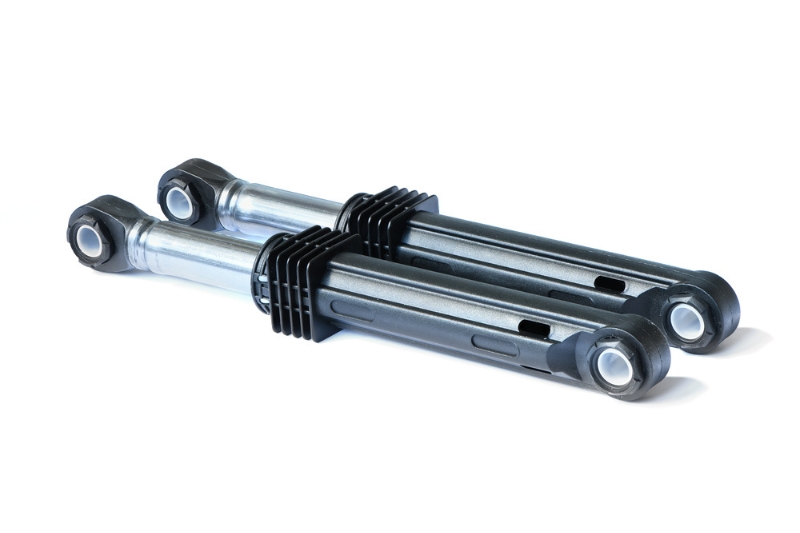
If you have tried everything else on this list so far and your machine still violently vibrates when in use, there may be an issue with your washing machine’s shock absorbers.
Every washer has 2-4 shock absorbers that allow the drum to spin while reducing the movement of the rest of the machine.
A broken shock absorber will need to be replaced to stop your washing machine from bumping and shaking around.
Unfortunately, you will have to hire a professional to do this, as it involves working on the inside of your washer.
7. Pad the machine
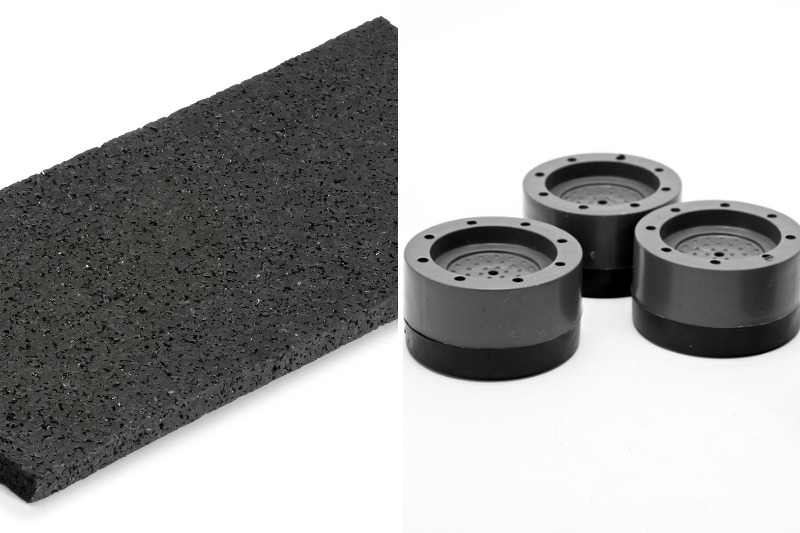
Sometimes, your washing machine will vibrate and make loud noises even when there is nothing wrong. This typically only happens when you are using a high spin speed.
Although you can reduce the spin speed, this is not always possible, so your next best option is to pad the machine to protect it from damage.
There are two different types of anti-vibration pads that can be used for this purpose. The first is a stick-on pad that cushions the sides of your machine. This prevents your washer from bumping into any nearby walls or appliances.
The other type of padding goes underneath the washing machine to absorb the vibrations, keep the machine in place, and protect the floor.
This padding can come as a large mat that the whole machine sits on or as individual pads for each foot of the washing machine. Both work equally as well, but the individual pads tend to be the cheaper option.
Can Vibrations from a Washing Machine Damage a House?

When using a violently vibrating washing machine each day, there is a chance that it will cause structural damage to your house.
This is because the vibrations will gradually weaken your floor, walls, and other structural parts of your home.
However, this will only occur if you do not rectify the problem, as any damage will take a long time to develop.
Although this sounds bad, you can be assured that even if all of this damage does occur, it will not cause your home to become so structurally unsound that it will collapse.
The worst you will have to deal with is cracked floors and walls, a damaged washing machine, and damaged furniture or appliances that are nearby.

Hannah has a passion for cleaning. She worked her way around Australia by cleaning hostels in exchange for free accommodation and used her cleaning skills to bag a job as a chalet host for a luxury ski company in France.
